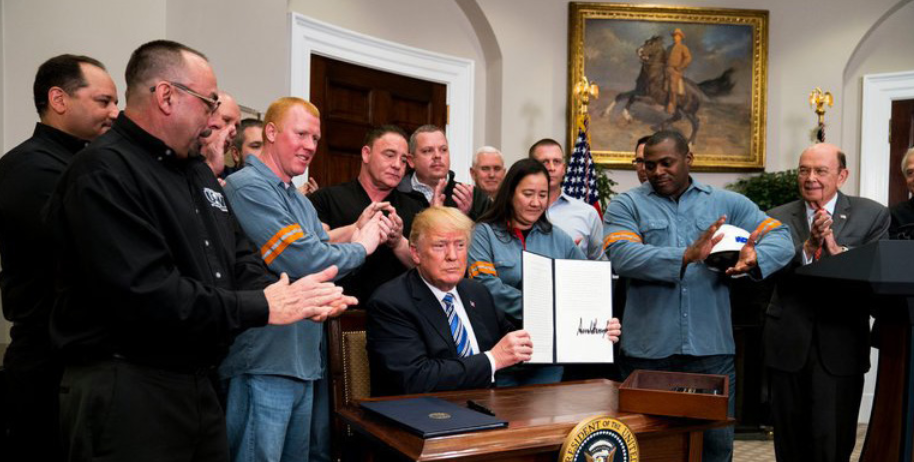President Donald Trump P’00 signed proclamations on March 8 to impose a 25% tariff on steel and a 10% tariff on aluminum in an effort to protect American manufacturing. Trump’s announcement, following a week of hints, rattled the stock markets and sent the United States’ trade partners scrambling to negotiate exemptions. The tariffs were the first step of Trump’s efforts to solve the United States’ $566 billion trade deficit. While tariffs may sustain the United States’ steel and aluminum industries, protectionism will ultimately hurt the American economy and damage Trump and the Republican Party politically.
Steel and aluminum tariffs will hurt American industries that use these goods in production. Steel and aluminum are important materials used in manufacturing industries such as cars and planes. As the costs of raw material rise, the cost of producing final products will also rise. Since American wages are higher than developing countries’, the steel and aluminum tariffs will only aggravate the high costs of manufacturing in the United States compared to other countries. Faced with higher costs and the necessity to maintain profits and competitiveness, firms can either close factories in the United States and move manufacturing to other countries or cut other costs by negotiating lower wages with the union. Both options — outsourcing and pay cuts — will harm blue-collar workers outside of the steel and aluminum industries, as well as the local economies surrounding these factories. This would be a significant political blow to the swing states of the Rust Belt, whose normally Democratic union members voted for Mr. Trump in 2016.
The economic reach of Trump’s steel and aluminum tariffs extend beyond manufacturing. Construction — faced with higher material costs — will likely slow, and factories will need more expensive machines to produce goods. Services related to the goods produced by steel and aluminum will also suffer, including those offered by car salesmen. Large numbers of factory workers losing their jobs will leave local economies devastated. Consumers will also face higher prices as firms will increase their prices to match the cost of the tariff. These tariffs will have a far-reaching effect throughout the American economy, decreasing growth and increasing prices.
The steel and aluminum tariffs were just the first step for Mr. Trump. On March 22, he ordered up to $60 billion worth of tariffs on Chinese goods. Later that day, China announced $3 billion in retaliatory tariffs, resulting in tumbling stock prices of American exporters to China, including U.S. Steel. The European Union is also considering retaliation for the steel and aluminum tariffs.
Moreover, the North American Free Trade Agreement (NAFTA) — a free trade agreement between the United States, Canada, and Mexico — is under threat. Together, these economic and political tensions indicate the beginning of a global trade war. In little more than a year in office, President Trump has utterly destroyed the foundations of America’s free trade policy for the future detriment of American consumers and producers. While the full extent of the economic ramifications of Mr. Trump’s trade war remain to be seen, it will most likely be disastrous for the United States.
Protectionist trade policies will also likely be disastrous for the Republican Party during the November midterm elections. The first House election conducted after Trump announced the tariffs was the special election in the 18th District in Pennsylvania, a district with a large, unionized steelworker population. With some steelworkers voting for Trump in 2016, Trump won this district by twenty percent. However, the steel union supported the Democrat Connor Lamb over Republican Rick Saccone, whom Trump endorsed. Because of the steel union’s support of Lamb, he was able to flip this solidly red seat blue (albeit by a razor-thin margin). This win demonstrates the beginning of the return of unionized blue-collar workers to the Democratic Party.
The Pennsylvania 18th district, combined with the trade war, establishes that Republicans will be vulnerable in the Rust Belt, where manufacturing is the heart of the local economy. If Republicans lost in a district that gains the most from Trump’s economic policy, they will perform worse in districts that will suffer from the trade war — districts with a large number of non-steel or aluminum manufacturing workers. The trade war may also hasten the return of blue-collar workers to the Democratic Party, potentially turning the forecasted midterm blue wave into a blue tsunami.





